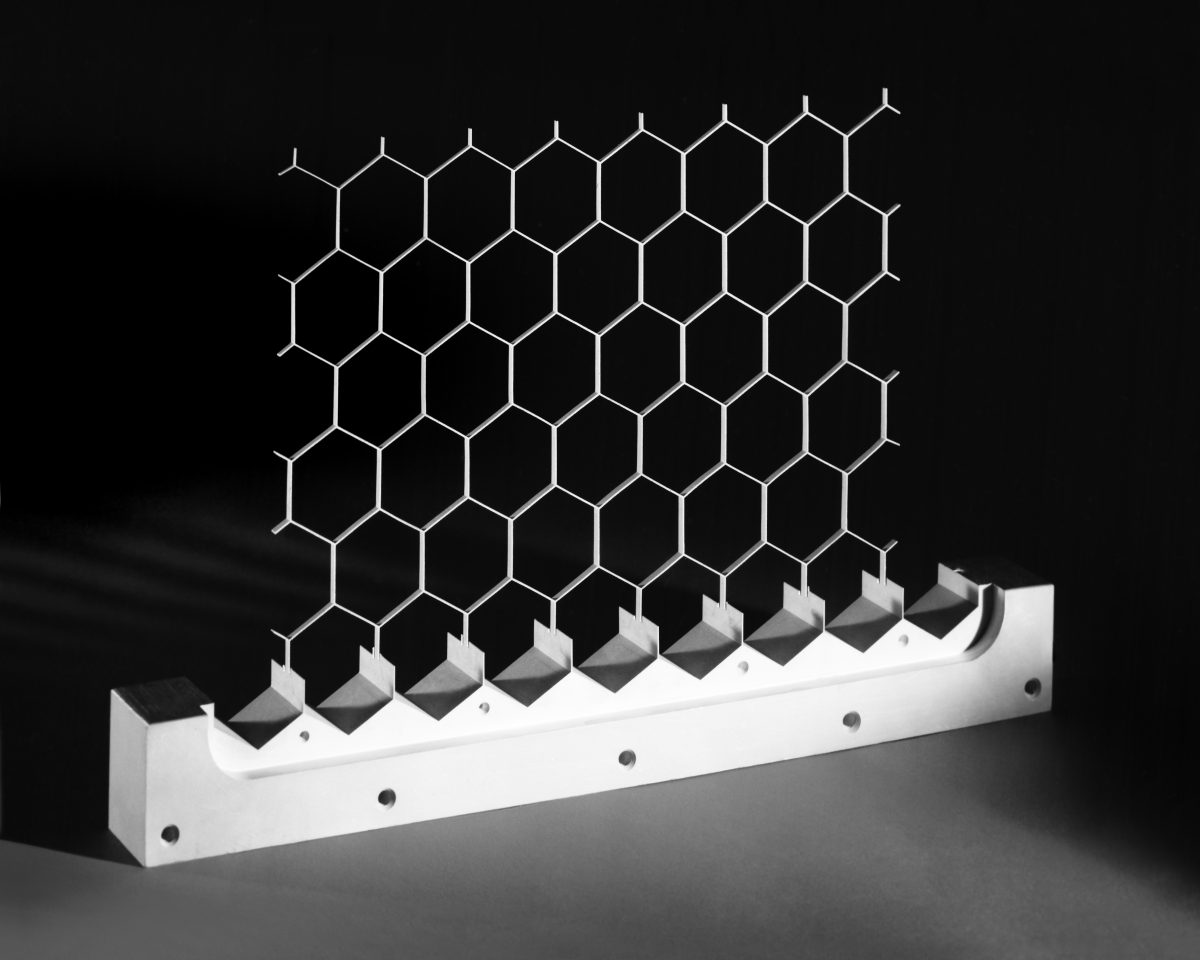-
work /
Systems of a Down (d), 2015
‘According to Quantum Chromodynamic (the theory describing the strong interaction) , Quarks have a quantum property known as flavour [down (d), up (u), charm (c), strange (s), top (t) or beauty (b)] and each of these flavours can have one of three possible colors dubbed red, green or blue and its corresponding anti-colors (for anti-quarks, the antiparticle counterpart of quarks). According to QCD quarks interact through the exchange of color carriers called gluons.
Hadrons (the name given to composite particles subject to the strong interaction), on the other hand, are postulated to be white. In this context “white” means effectively that quarks cannot be seen, that is, they have been subtracted from our observable environment. The only thing we can see is their prison, which is totally opaque and, to a large extent, impenetrable. ‘
(Excerpt from The Unbearable Weight of Color by João Seixas, 2018)This experimental project resulted from research undertaken of CERN’s photographic archive.
It is structured as a topographic survey of failed experiments, tools and components used to build the CERN Large Hadron Collider (LHC).
These objects, which help to render the invisible visible. are visible themselves only insofar as they have failed.
In looking at these objects, I’m struck by the inverse trajectories between the fields of art and applied or particle physics.
Whereas one actively believes that risk and failure is essential to success and builds resilience, the other is risk averse.
Why is it that our cultural and art institutions, the purveyors or ideas and thought, have become places where ideas can no longer fail?
-

-

-

-

-

-

-

-

-

-

-

-

-

-

-

-

-

-

-

-

-

-

-

-

-

-

-

-

-

-

-

-

-

-

-

-

-

-

-

-

-

-

-

-

-

-

-

-

-

-

-

-

-

-

-

-

-

-

-

-

-

-

-

-

-

-

-

-

-

-

-

-

-

-

-

-

-

-

-

-

-

-

-

-

-

-

-

-

-

-

-

-

-

-

-

-

-

-

-

-

-

-

-

-

-

-

-

-

-

-

-

-

-

-

-

-

-

-

-

-

-

-

-

-

-

-

-

-

-

-

-

-

-

-

-

-

-

-

-

-

-

-

-

-

-

-

-

-

-

-

-

-

-

-

-

-

-

-

-

-

-

-

-

-

-

-

-

-

-

-

-

-

-

-

-

-

-

-

-

-

-

-

-

-

-

-

-

-

-

-

-

-

-

-

-

-

-

-

-

-

-

-

-

-

-

-

-

-

-

-

-

-

-

-

-

-

-

-

-

-

-

-

-

-

-

-

-

-

-

-

-

-

-

-









































































































































































































































